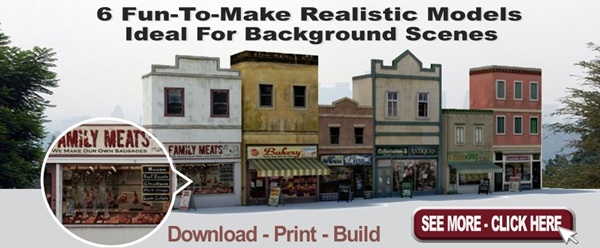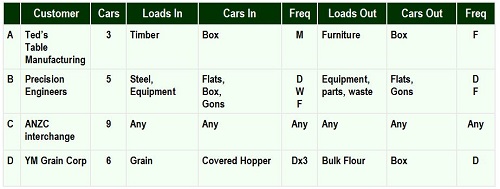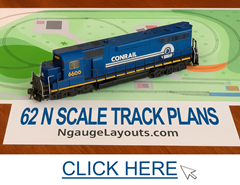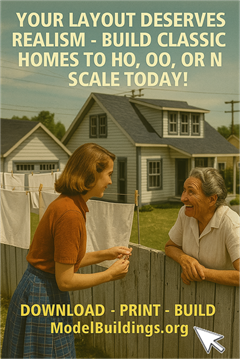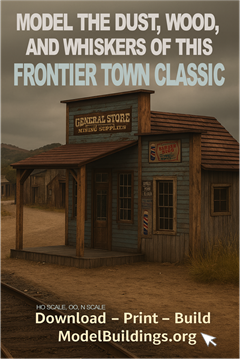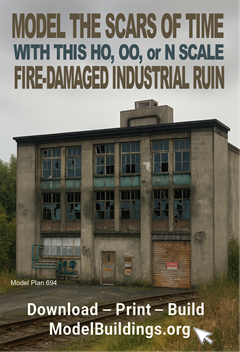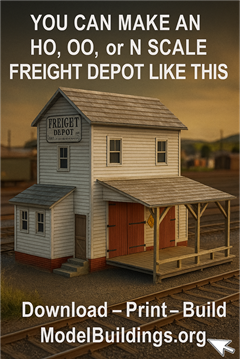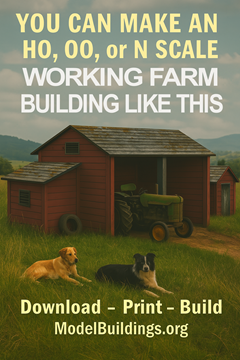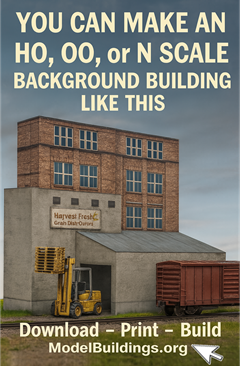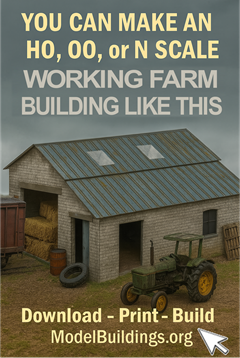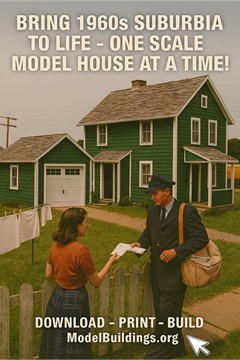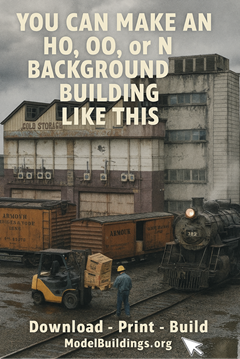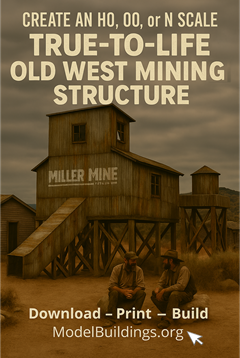Everything on model trains, model railroads, model railways, locomotives, model train layouts, scenery, wiring, DCC and more. Enjoy the world's best hobby... model railroading!
Updating Locomotives
“I’m a newbie into the model railroading. I have 6 DC blue box athrean locomotives and want to update to dcc with sound. After talking to the hobby shop they are like yes it can be done but the performance isn’t that great. Can I get some answers please?”
Kadee Coupler Uncoupling Problem
 It is good to see so many beginners joining the hobby – that’s exactly what this hobby needs to continue long into the future. If you are experienced in the hobby, I’m sure you’ll agree, we should all be doing as much as we can to encourage and help them along the wonderful journey they have ahead. If you are able to share your knowledge then please do so by using the ‘Comments’ tag below each posting.
It is good to see so many beginners joining the hobby – that’s exactly what this hobby needs to continue long into the future. If you are experienced in the hobby, I’m sure you’ll agree, we should all be doing as much as we can to encourage and help them along the wonderful journey they have ahead. If you are able to share your knowledge then please do so by using the ‘Comments’ tag below each posting.
Anthony asks readers:
“I am a newbie to model railroading and use HO Kadee couplers, but I am having lots of trouble with cars becoming uncoupled during operations. Help from anyone please.”
Which Baseboard Materials To Use?
Another beginner (Brad) asks readers for help:
“I’m planning my frist layout in HO, and I am confused with what to use for my baseboard and leg supports etc. I am lucky to have a spare room I can use so I will expand it in coming years or decades. I would appreciate hearing your readers views on what materials I should build with. Many thanks.”
Beginner Asks For Your Help
 Matthew is new to the hobby and would like some advice from experienced model railroaders. This photos shows the beginnings of his layout which he hopes to expand (see photo of plan). He is however having a few problems, so use the comments link to add any suggestions you have to help him get started.
Matthew is new to the hobby and would like some advice from experienced model railroaders. This photos shows the beginnings of his layout which he hopes to expand (see photo of plan). He is however having a few problems, so use the comments link to add any suggestions you have to help him get started.
 In Matthew’s own words: “My trains keep stopping at certain parts of curves and on switches. I have the Hornby controller. Can someone please give me some advice?
In Matthew’s own words: “My trains keep stopping at certain parts of curves and on switches. I have the Hornby controller. Can someone please give me some advice?
Another FREE Model Railroad Calculator – How To Measure and Build a Helix
Last week I gave you the link to use a free grade calculator. This week a helix calculator has been added… and it’s 100% free to use and share with your model railroading friends.
Here’s a direct link to use the Free Helix Calculator. Please tell your friends about it too.
Rust On Track
Chris would like help from experienced model railroaders:
“I am having problems with rust on the pickup (center) track on my Marklin layout. Is there any cure or help with this problem? Some track are still new, and is not in use. Any help, or suggestions will help. My trains are stranded.”
FREE Track Grade Calculator for Train Blog Readers to Use and Share With Friends in the Hobby
One of the biggest mistakes when planning a model railroad is to misjudge the required gradients (grades) for the layout. Even though the track plans might look good sketched on paper, the big question is; how practical will they be when converted from paper to track, wood, and foam on a model railroad?
The track may need to be longer than on the sketched plan if the locomotive is to pull several cars up and down an incline without mishap, or the wheels spinning through lack of traction. Having a locomotive cough, splutter, and eventually stall on a grade can be very disheartening, especially if it results in a derailment or burnt out motor.
Here is the link to the FREE TRACK GRADE CALCULATOR for you to easily work out the correct track grades, and avoid the problems mentioned above. You are welcome to share it on Facebook or by email with friends.
You can calculate in feet, inches, miles or in metrics.
8 Reasons to Single or Double Track Your Model Railroad
 One of the key questions asked when it comes to track planning is whether to single track or double track the line. The answer to that dilemma will become apparent when you decide the answers to these 8 questions:
One of the key questions asked when it comes to track planning is whether to single track or double track the line. The answer to that dilemma will become apparent when you decide the answers to these 8 questions:
1. Do you have the ability to control two main lines at once?
Running two or more trains on your own is more difficult than you might think, especially when operating a large layout. If you’re operating with DC, you’ll require two power packs, or a double power pack. DCC has made wiring and control much easier, but if you are not paying attention, the trains could derail on a curve, in a tunnel, or onto the floor.
2. Are you prepared for more track maintenance?
I am not trying to discourage you from double tracking, far from it; but it is important to be aware of the ramifications in terms of cost, space, operation, and maintenance. Do you have the time, the energy, and the patience to ensure both mains are kept clean for your trains to run smoothly?
3. Can you afford to have two mainlines?
Double tracking could double (or at least substantially increase) your costs. Apart from the increased space requirements; you will need double the amount of track and roadbed, more ballast, more rail joiners… and the costs of those things can really add up.
 4. Do you have enough space to double track?
4. Do you have enough space to double track?
I touched on space requirements earlier, but the importance of having enough space to double track should not be overlooked. In particular, the curves need to be wide enough and spaced correctly, so that trains don’t side swipe each other and derail. As a guide, take a look at clearances from a prototypical viewpoint.
5. Do you operate enough freight traffic to justify two mains?
In the real world, single track railroads typically have a passing siding where a train can wait for another train to clear. If you’re only going to operate one train, and then maybe 10 to 15 minutes later operate the next one, then a single track is possibly all you require.
6. Is it worth having two mains if there’s minimal rail traffic?
Sometimes it is, especially from an aesthetics point of view. A model railroad can be more visually interesting, and look a little more prototypical by double tracking, or by using a combination of single track and double track. One option is to double track most of the layout and then run a single track over a bridge, through a tunnel, on a tight curve, possibly through a town, or somewhere else where it might be much easier to just have single track. That approach is not uncommon on real railroads, because it can save the railroad money without adversely affecting operational efficiency.
7. What is the length of your longest train?
If you opt to single track your layout and compensate by including passing sidings, then you’ll need to know the length of your longest train before committing. The length of the longest train will determine how long your passing siding needs to be. It should be at least the same length as your longest train.
On real railroads; sidings will generally have a slower speed limit than the main line. Trains on sidings might be restricted to 10 miles per hour. Also, it can be a good idea to position a siding close to a passenger station, rail yard or industry. An industry could operate off a siding without affecting the main line traffic operations.
Now, I could have posed this question earlier, because it is a key factor. However, I wanted to expand on the question so have left it until last.
8. Are you modeling a specific railroad with a specific time and place in mind?
This question is important because in days gone by, double track was often the norm. The same goes for specific railroads. As an example; railroads in Canada, United States and Mexico are classified based around their operating revenue.
In many instances a Class 1 railroad (the biggest) had as many as four mainline, with two in operation for passenger services, and two operating freight services. This minimized delays, because being on a different line the fast freights didn’t need to wait for the slower regular stopping passenger trains.
As a matter of interest, until January 1956 a railroad with revenues of $1 million was classified as a Class 1 railroad. Before 1956, railroads with annual revenues below $100,000 were classified as Class III railroads.
The annual revenue cutoff requirement for railroad classification has increased over the years. Class 1 railroads increased several times from $3 million to $5 million by 1965, to $10 million by 1976, to $50 million in 1978, and in 2011 to $433.2 million. The number of railroads meeting the Class 1 cutoff requirements reduced in number over the years.
Throughout the years there were also other requirements and changes that affected railroad classifications. In 1979 all terminal and switching railroads were re-designated to Class III.
Railroads with increasing revenues were often reluctant to be reclassified, because an upgrading usually meant a corresponding increase in legal and administrative costs. An example was in 1991 when the Wisconsin Central and Montana Rail Link Class II railroads requested the ICC (Interstate Commerce Commission) increase the required minimum revenue requirement from $93.5 million. This was to avoid being re-designated to Class I.
Also, the introduction of CTC (Centralized Traffic Control) changed railroad signal operations. Train crews and local signal operators were no longer responsible for routing decisions. Centralized offices for dispatcher’s were introduced to control train movements were trains moving in opposing directions on the same track use switches and sidings to pass each other.
The widespread use of automobiles, bus, air, and road freight also affected railroad operations. Many rail passenger services ceased to exist as railroads were forced to streamline or downsize operations with single track and passing sidings.
So, numerous changes have impacted rail operation over the decades. This is why, if you want to authentically replicate a real railroad, you will need to know how it operated at a particular point in time.
After giving some thought to how you answered each of the above 8 questions, the decision on whether to single or double track your layout will be an easy decision to make.
For more help with plans, diagrams, tutorials, videos etc on DCC, scenery, wiring, repairs, maintenance, overcoming problems etc watch this video…
4 Tips for Better Rail Yard Design
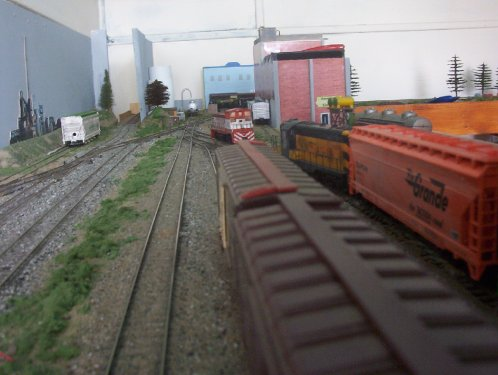 When it comes to rolling stock and locomotives, most of us own more than we could ever operate at one time. One solution is to store your excess trains in their boxes or put them on display in cabinets or on shelves. The other solution is to store all your extra engines and cars on yard tracks either as part your layout operation, or on separate “non-operational” tracks away from your layout.
When it comes to rolling stock and locomotives, most of us own more than we could ever operate at one time. One solution is to store your excess trains in their boxes or put them on display in cabinets or on shelves. The other solution is to store all your extra engines and cars on yard tracks either as part your layout operation, or on separate “non-operational” tracks away from your layout.
If you have plans to build a rail yard then here are some considerations:
1. Try to integrate your staging track with it linked to the main track at each end.
If there is sufficient space for two staging tracks, then better still. The intent of a yard (other than for storage) is to gather inbound cars for redistribution, and to assign them to trains bound for the intended destination.
Although the easy way is to just lift a car off the track and plonk it down where you want it, that takes the fun out of solving the puzzle. Real railroads can’t do that, so taking the easy option defeats the whole purpose of operating model trains.
To rearrange cars properly requires enough yard space to efficiently move cars without physically lifting them off the track.
2. Try not to squeeze too many tracks into a cramped space.
The problem is; when the tracks are positioned to close together it might cause a “domino effect” when a car derails.
3. Always include an escape route so that locomotives don’t get trapped on track spurs at the REAR of a line of freight cars.
4. Keep your yard configuration simple.
A complicated design could trigger problems even with the simplest mistake.
Overall; where possible a yard should be easy to get rail traffic in and out of. Keep the track configuration simple and the train movements will be simple too.
How to Add Interest to Your Model Train Operations
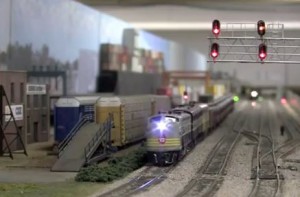 It is easy to get bored with a basic oval track layout with train movements being so limited. However, this doesn’t need to be the case if more track is added. With a more interesting track configuration it is possible to simulate the day-to-day activities of a real railroad. And, that’s where the stimulation, action, and challenges can really come into play.
It is easy to get bored with a basic oval track layout with train movements being so limited. However, this doesn’t need to be the case if more track is added. With a more interesting track configuration it is possible to simulate the day-to-day activities of a real railroad. And, that’s where the stimulation, action, and challenges can really come into play.
I said “challenges”, because the job on any railroad (real or scale model), is to operate the railroad as efficiently and effectively as possible. After all, without efficiency, a real railroad would not only lose customers, but potentially become unprofitable.
Every aspect of a railroad needs to operate efficiently including:
— Picking up freight
— Moving passengers
— Assembling trains
— Car delivery to consignees
— Sorting freight cars on arrival based on planned destinations
— Returning empty cars
So for realistic railroad operations, trains are scheduled with the purpose to make profit for the railroad. Without profit the railroad wouldn’t exist. So, cars on spurs need to be efficiently organized and accessible (too many cars on a spur can cause operational issues and delays).
The pickups and drop offs can be controlled on a model railroad with the aid of car cards. The trains would go from one destination to another picking up and dropping off passengers or freight. This all needs to happen to a schedule so as not to delay passengers, or delaying freight from getting delivered, or delaying other trains.
Too many cars waiting around doing nothing could send the railroad broke. However, not everything on a railroad moves all the time. Even though trains are generally on their way to somewhere, cars typically:
— Wait near an industry for loading/unloading
— Wait to be picked up at an interchange
— Wait for the next train in a classification yard
— Wait on empty car tracks
As with any business, a railroad needs to be customer focused:
— The railroad must understand and meet the needs of customers
— The track capacity needs to be clearly understood
— The inputs and outputs by commodity and car type need to be known
— The railroad should know the frequency (and quality) of customer needs to calculate the required frequency, number, and train type
— To maximize efficiency, the locations and industries will need names.
The loads and traffic needs of a small switching layout might look something like this –
For more information and ideas on train operations; login to the Online Model Train Club and there’s a special Category called “Operation”, with plenty of ideas for interchanging cars, switching a siding, run-around operation, factors determining the operational capacity of a railroad, and various other operation related topics.
You won’t necessarily require a large layout for realistic railroad operations:
— With a switching layout, the cars move on to (or off) the layout
— All traffic will be yard to staging or staging to yard
— Traffic needs to be logically arranged in context
— An Interchange track will add operational variety and complexity
Ways to Represent Car Movements
Here are some options:
— Waybills and car cards (single and multiple destination)
— Color-Coded Tacks
— Switch Lists (Computerized)
— “Car-for-Car” Replacement
— Prototype paper work
It is over to you what system you opt for. Stick with one system or use a mix to add interest and variety to your operations.
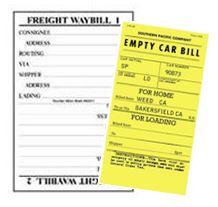 Waybills typically use one card for each car on the layout to determine the destination and movement of each car.
Waybills typically use one card for each car on the layout to determine the destination and movement of each car.
You can set the perimeters such as whether the engineer or brakeman has the responsibility for updating the train’s documentation. Decide whether you’ll use card cards, waybills, or a combination system. Decide if there are any special instructions to go with the car.
This is where model railroad operation can really become interesting, because each train or car can function like pieces (or tokens) on a giant playing board (your layout). Waybills can be shuffled (like cards) to control the game (destinations, loads etc).
All going well; each car will arrive at the correct destination on, or about, the scheduled time. If not, the whole railroad could suffer delays. Too many delays and this will affect the railroads profitability.
The key to all this is to have fun, regardless of whether you want to take operations seriously, or just watch your trains go around the track. A little complexity can give a model railroad purpose, but too much complexity can lead to frustration. If nothing else; hopefully this article has stressed the importance for a railroad to have a purpose, and the reasons and logic why trains and individual cars are moving around the track, or perhaps why they are sitting on a siding.
LATEST POLL RESULTS
407 people voted in our recent poll which asked:
“Will you be operating your trains to entertain friends and family over Christmas/New Year?”
YES – if I get the opportunity (31%, 126 Votes)
Yes – but only if they show interest (19%, 76 Votes)
No – my trains will be having a rest (18%, 74 Votes)
No – I don’t think they’ll be interested (8%, 34 Votes)
I don’t have a layout yet (24%, 97 Votes)
